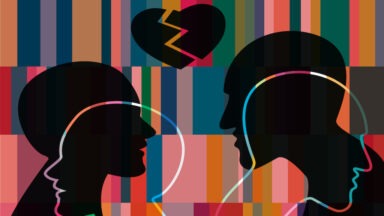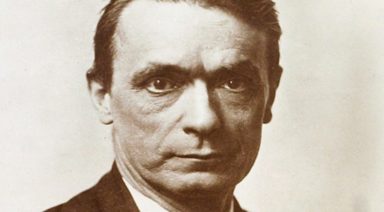Subjects Able to Intentionally Heal in Lucid Dream, Study Finds

The findings of a groundbreaking new study on lucid dreaming are in and suggest that those trained in the practice not only see a dramatic improvement in their PTSD symptoms but may also experience change on a biological level.
Research into lucid dreams, in which one wakes up inside a dream, has produced a fascinating insight into the neurological features of this state. Most of the investigation thus far has been focused on mapping brain activity, which has shown the unique characteristics of the brain function of lucid dreamers.
Previously we reported on the preliminary findings of a study out of the Institute of Noetic Sciences, or IONS, the first of its kind to look at the potential for healing within a lucid dream, both on a psychological and physiological level.
Dr. Garret Yount is a molecular neurobiologist who led the study and updated us on the final findings of this extraordinary investigation.
“So in this study, we partnered with an awesome lucid dreaming teacher, Charlie Morley, and we had heard from him that his workshops with veterans with PTSD were really helpful in terms of reducing the symptoms of PTSD,” Yount said. “So, we partnered with him to basically bring a scientific lens to that, and the idea was to recruit folks with chronic PTSD, we included both veterans and non-veterans. They attended a one-week workshop from their home, and Charlie taught them how to achieve lucidity with the goal of transforming their trauma during the dreams. Then we, the research team, just tried to collect data along the way without interfering too much with the process.”
The participants were taught a variety of induction techniques and most had at least one lucid dream within the week. The initial results of the study were remarkable.
“The big finding was that PTSD symptoms decreased dramatically during the workshop, and amazingly it stayed that way all the way when we looked a month later. The testimonials from the people in the study were just so inspiring — they talked about for 10 years trying all kinds of therapy, and then in one week, boom, their life was changed, they were free of their nightmares. It was pretty incredible,” Yount said.
Researchers recently analyzed the data from a particularly unique component of the study.
“One of the really cool aspects of the study was we did an exploratory assessment of a biomarker,” Yount said. “So, we looked at an enzyme called amylase and we looked at levels of this — you can measure it in the saliva. We chose amylase because it’s been shown to be a marker of stress. For folks with PTSD, it acts differently, so it’s indicative of chronic sympathetic nervous system activation. So, we were looking at levels of amylase to see if it might show there was a general decrease in levels of stress after a healing lucid dreaming, and that’s exactly what we found. So, this means that their general stress levels went down. This was amazing, it was the first evidence ever of a physiological biomarker changing in relation to a healing lucid dream.
What can be the mechanism behind this phenomenon?
“So, my best guess about how it works is that this is a way to tap into the power of the unconscious mind in a way where you can really direct and manifest healing. This is oftentimes inhibited by our thinking brain, our thinking mind, and I think the sweet spot of this lucid dreaming is where you can kind of have a pact between the conscious mind and the subconscious mind to really bring about healing and just let it happen,” Yount said.
IONS is now planning a larger follow-up study. Should these results be replicated, the implications would be major.
“So, it’s exciting to see this physiological biomarker changing in association with the reduced PTSD symptoms, and it makes sense because of the relationship between the sympathetic nervous system,” Yount said. “It’s very exciting and has huge implications for the treatment of PTSD and other mental illnesses that are difficult to treat. But the fact that we found, for the first time, evidence of this physiological biomarker changing in relation to the healing lucid dream — has implications for illnesses that are more physically manifested. If you can change the level of an enzyme in your body through a healing lucid dream, that means you can change physical illnesses. So, I think this is tremendous and we have the opportunity to learn a lot about the healing power of the mind.”
IONS is currently recruiting participants for the follow-up study. Information is available at noetic.org
Researchers Develop Device to Influence Direction of Your Dreams

Sleep is strange; at the end of the day we fall unconscious, our bodies become paralyzed, and we hallucinate vividly, before quickly forgetting what was just experienced. But now researchers at MIT are engineering an interface to influence this bizarre state, believing it may hold the key to our creative genius.
There is a period between wakefulness and that deep, restorative slumber, known as hypnogogia. These fleeting moments have long been considered a place where creative brilliance can be accessed.
Innovators including Thomas Edison, Nikola Tesla and Salvador Dali all intentionally tapped into this state for inspiration, attributing much of their inventions and masterpieces to it.
Holding a pair of steel balls as they fell asleep, they would drift into the hypnagogic state for a few seconds, before their muscles would relax, the balls would fall to the floor, and they would be jolted back awake. This brief entry into the dream state would allow them to remember the bizarre hallucinations and ingenious thoughts floating in the creative ether.
This was part and parcel to Dali’s famous paranoiac-critical method that produced his most trippy and iconic work. But instead of steel balls, Dali used a metal key and an upside-down plate for it to land on, producing a loud clang.
Dali found that not only did these micro-naps spark creativity, but they also provided a refreshed mental state, without the grogginess of a longer rest.
Taking note from these innovators, MIT researchers are developing a modernized version of the steel ball technique through a worn computer interface called Dormio. But instead of waking them, the interface influences sleepers in hypnagogia, attempting to control the direction of their semi-coherent state, and they’ve had some preliminary success.

Dormio interface via media.mit.edu
Using a glove fitted with a series of wires and biosensors, the interface tracks users’ slow descent into sleep, measuring the subtle muscle relaxations of the hand. From there, an app provides an audio cue that prevents users from going into a deeper sleep, suspending them in the hypnagogic state with a prompted word or concept to focus on.
Thus far, the words ‘fork’ and ‘rabbit’ have been used successfully as a theme for “dream content.” Users are then asked questions to capture ideas floating through their mind, without fully waking them, before they are then allowed to fall asleep.
We spend close to a third of our lives sleeping, where our minds exist in creative, fantastic hallucinatory states. Researchers on the team want to figure out how to tap into that world and potentially take advantage of it.
The unconscious mind has been the subject of study by scientists for centuries, yet we still know so little about it. It’s also been proven that we are all born creative geniuses, but through the constructs and demands of our society, our originality is constantly suppressed. Could that creativity be resurrected with hypnogogic enhancement?




































